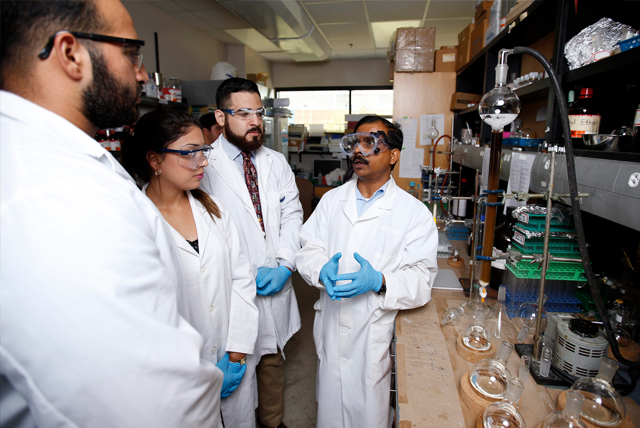Document Type
Article
Publication Date
1-16-2009
Abstract
We demonstrated previously that the protein GEC1 (glandular epithelial cell 1) bound to the human κ opioid receptor (hKOPR) and promoted cell surface expression of the receptor by facilitating its trafficking along the secretory pathway. Here we showed that three hKOPR residues (Phe345, Pro346, and Met350) and seven GEC1 residues (Tyr49, Val51, Leu55, Thr56, Val57, Phe60, and Ile64) are indispensable for the interaction. Modeling studies revealed that the interaction was mediated via direct contacts between the kinked hydrophobic fragment in hKOPR C-tail and the curved hydrophobic surface in GEC1 around the S2 β-strand. Intramolecular Leu44-Tyr109 interaction in GEC1 was important, likely by maintaining its structural integrity. Microtubule binding mediated by the GEC1 N-terminal domain was essential for the GEC1 effect. Expression of GEC1 also increased cell surface levels of the GluR1 subunit and the prostaglandin EP3.f receptor, which have FPXXM and FPXM sequences, respectively. With its widespread distribution in the nervous system and its predominantly hydrophobic interactions, GEC1 may have chaperone-like effects for many cell surface proteins along the biosynthesis pathway.
Recommended Citation
Chen, Y., Chen, C., Kotsikorou, E., Lynch, D. L., Reggio, P. H., & Liu-Chen, L.-Y. (2009). GEC1-κ Opioid Receptor Binding Involves Hydrophobic Interactions GEC1 HAS CHAPERONE-LIKE EFFECT. Journal of Biological Chemistry, 284(3), 1673–1685. https://doi.org/10.1074/jbc.M808303200
First Page
1673
Last Page
1685
Publication Title
Journal of Biological Chemistry
DOI
10.1074/jbc.M808303200



Comments
© 2009 American Society for Biochemistry and Molecular Biology Inc. Original published version available at http://doi.org/10.1074/jbc.M808303200